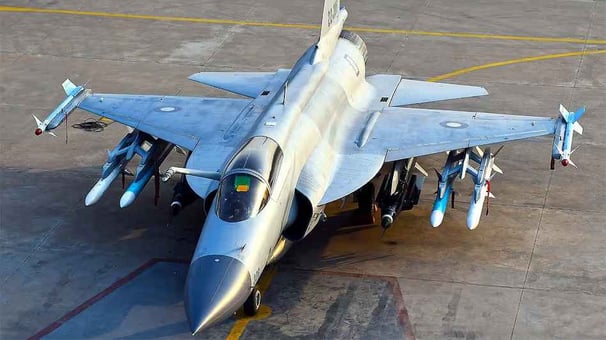

May 10, 2025 — In a significant development amid escalating tensions between India and Pakistan, the Indian Air Force (IAF) successfully shot down two Pakistani JF-17 fighter jets during a recent aerial engagement over Jammu and Kashmir. This action follows Pakistan's alleged attack on Jammu airport, which India has condemned as a serious escalation.
The Incident
According to reports, the Pakistani Air Force launched an offensive targeting Jammu airport, a facility serving both civilian and military purposes. The IAF responded promptly, deploying advanced air defense systems that intercepted and destroyed two incoming JF-17 aircraft. Eyewitnesses in Jammu described a night of chaos, with explosions, air-raid sirens, and widespread power outages causing panic among residents.
Pakistan has denied initiating the attack, labeling India's claims as baseless and demanding evidence. However, the IAF's swift and decisive action underscores India's commitment to defending its sovereignty and maintaining regional stability.
Understanding the JF-17 Thunder
The JF-17 Thunder, also known as FC-1 Xiaolong, is a fourth-generation, lightweight, single-engine, multirole combat aircraft developed jointly by Pakistan's Aeronautical Complex and China's Chengdu Aircraft Corporation. Designed to replace aging fleets of A-5C, F-7P/PG, Mirage III, and Mirage 5 aircraft, the JF-17 serves as the backbone of the Pakistan Air Force (PAF).
Key features of the JF-17 include:
Speed and Maneuverability: Capable of reaching speeds up to Mach 1.6, the JF-17 is designed for agility in various combat scenarios.
Armament: Equipped with a 23mm GSh-23-2 twin-barrel autocannon and capable of carrying a diverse array of ordnance, including air-to-air, air-to-surface, and anti-ship missiles.
Avionics: Features a modern avionics suite with open architecture software, allowing for integration with various weapon systems.
Variants: The latest Block III variant boasts advanced features such as an Active Electronically Scanned Array (AESA) radar, enhanced electronic warfare capabilities, and the ability to deploy long-range PL-15 missiles.
Significance of the Downing
The successful interception and destruction of two JF-17 jets by the IAF is a testament to India's robust air defense capabilities and strategic preparedness. This incident not only neutralizes immediate threats but also sends a clear message regarding India's resolve to protect its airspace against any aggression.
Furthermore, the downing of these aircraft highlights potential vulnerabilities in the JF-17 platform, especially when pitted against India's advanced defense systems. It underscores the importance of continuous modernization and technological advancement in maintaining air superiority.
International Response
The international community has expressed concern over the escalating conflict between the two nuclear-armed neighbors. Calls for restraint and dialogue have been issued by various global leaders and organizations, emphasizing the need for de-escalation to ensure regional peace and stability.
Conclusion
India's decisive action in downing the Pakistani JF-17 jets reinforces its commitment to national security and deterrence against hostile acts. As tensions persist, India's defense forces remain vigilant, prepared to respond to any threats to its sovereignty and territorial integrity.
